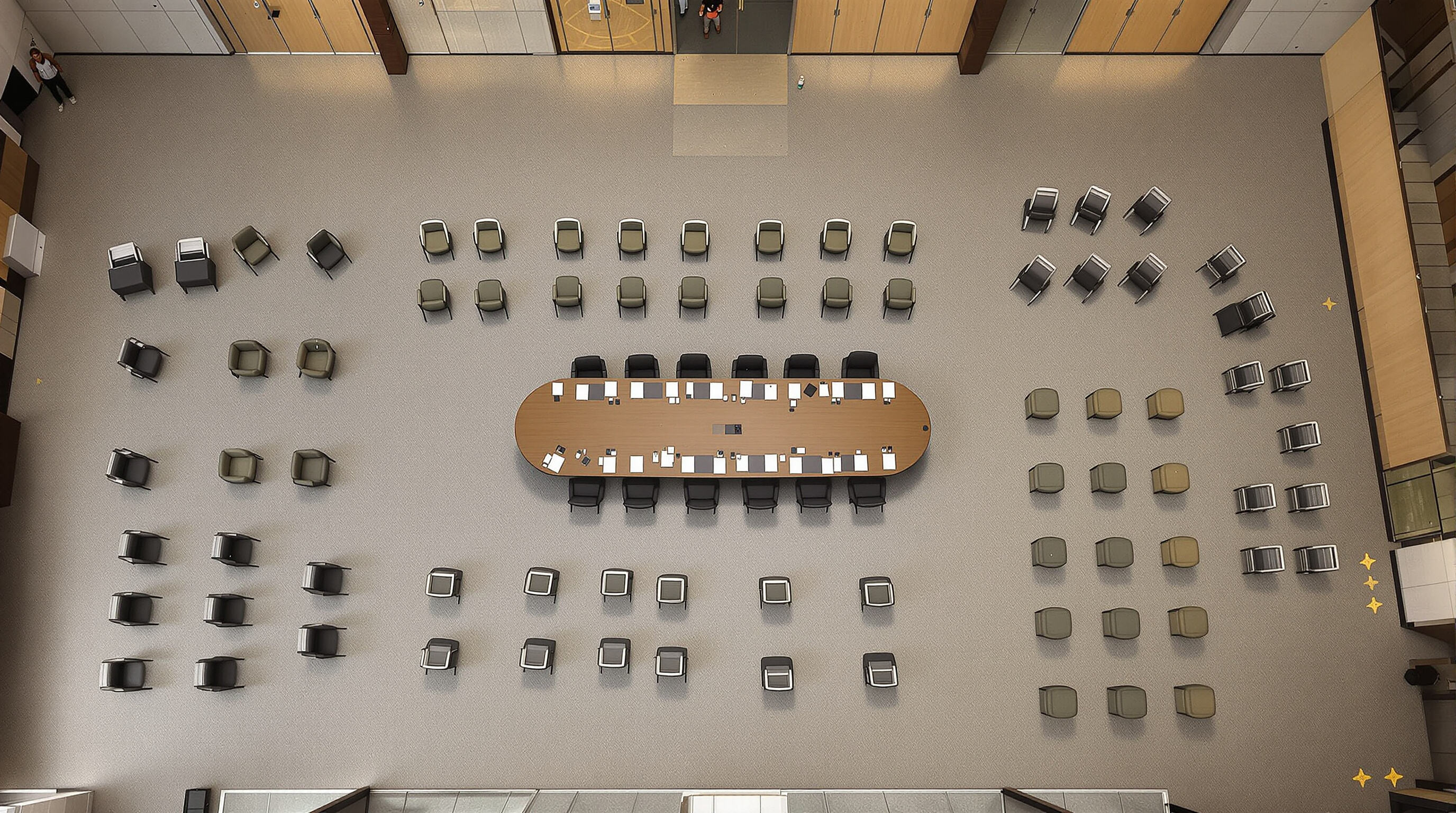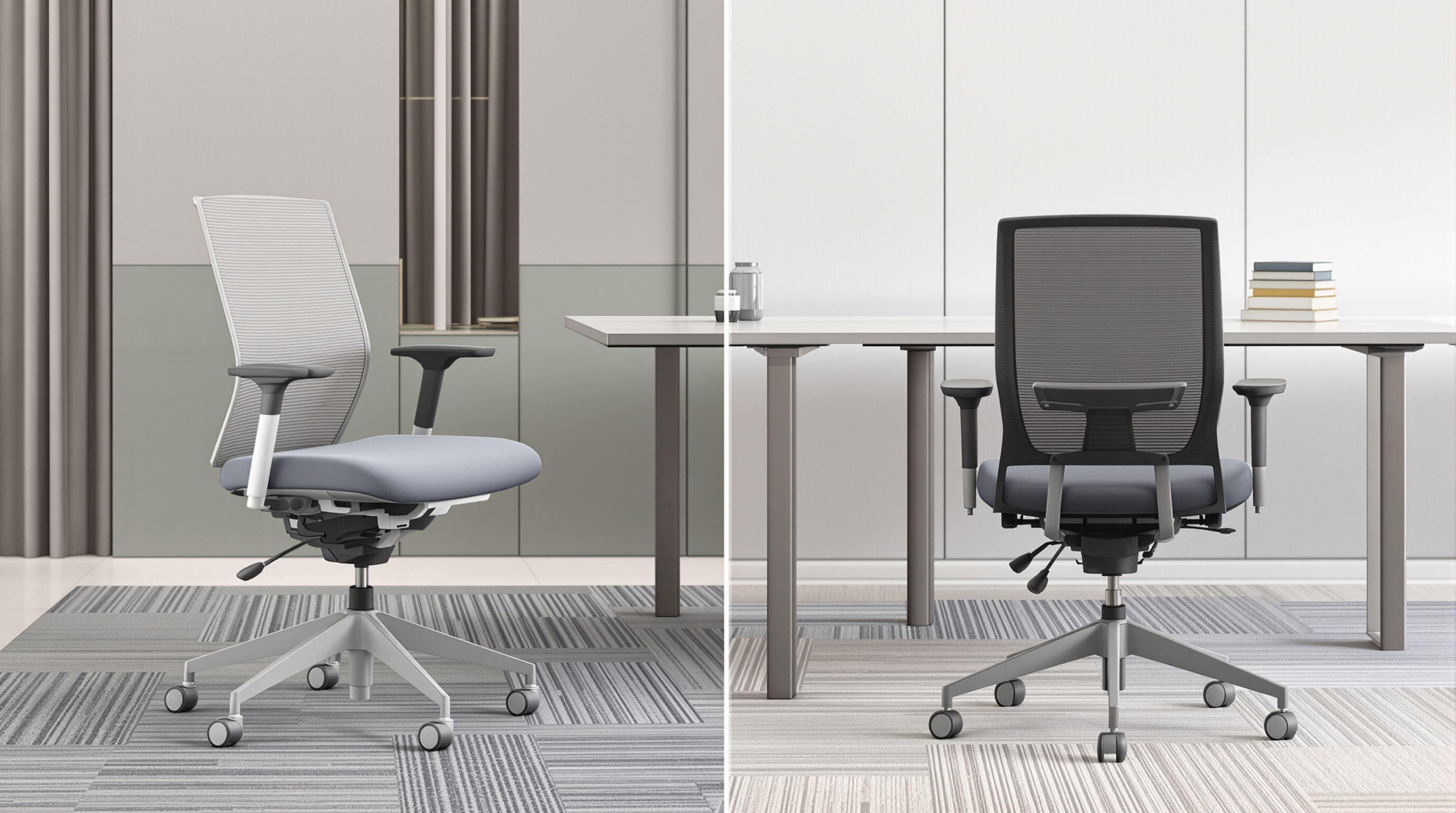
Choosing conference room chairs really depends on who will be using them and how long they'll sit there. For regular staff meetings that run around 3 to 4 hours each day, we need something comfortable enough to handle those marathon strategy sessions without causing back pain. When clients come in for presentations though, looks matter more than comfort alone. The chairs should look professional even if people are only sitting in them for an hour or two at most. And let's not forget about the busy conference rooms that host over 15 meetings every week. These high traffic areas need sturdier options that can take some abuse. Facility managers reported last year that chairs with at least 500 pounds weight capacity work best here, plus scratch resistant surfaces help maintain that clean appearance between rentals.
Use this framework to match seating to group dynamics:
| Group Size | Optimal Room Dimensions | Chair Count | Layout Type |
|---|---|---|---|
| 6–8 | 10' x 12' | 6–8 | Boardroom |
| 10–12 | 14' x 16' | 10–12 | U-Shaped |
| 15–20 | 18' x 20' | 15–20 | Theater |
Subtract 10 feet from room length for main table placement, leaving 36" walkways on three sides to meet ADA compliance.
Prioritize these spacing standards for corporate environments:
U-shaped configurations reduce movement disruptions by 73% compared to rectangular setups in rooms under 300 sq ft, minimizing distractions during focused discussions.
Select conference chairs with these high-density features:
Test layouts using cardboard templates before purchase—improper density planning causes 29% longer meeting setup times according to workplace efficiency studies.

Good ergonomic chairs for conferences need certain key features if we want to avoid those common office injuries. First off, proper lumbar support helps keep the spine aligned naturally, which makes a big difference when sitting through those long business meetings. Seat depth matters too most chairs work best around 16 to 20 inches deep so weight gets spread out over the thighs rather than巂中 on pressure points. And then there are those backrests designed to encourage better posture they stop people from slumping forward unconsciously. Studies from last year showed that these design elements together can cut down on muscle and joint pain by roughly 30% or so in typical office environments. Makes sense really, since nobody wants their team members walking out with sore backs after important presentations.
Height-adjustable seats (4"–6" range) and 360-degree swivel bases ensure accessibility for 95% of employees in multi-user environments. Armrests with 2"–3" vertical adjustability and 15-degree pivot capabilities accommodate varying body types, while tilt tension controls allow personalized recline resistance. Modular designs enable quick reconfiguration for collaborative versus presentation-focused layouts without compromising individual comfort.
High-resilience foam (1.8–2.5 lb density) retains shape through 8+ hours of daily use, paired with moisture-wicking mesh backrests that improve airflow by 40% compared to solid upholstery. Thermal testing shows breathable fabrics reduce seat surface temperatures by 7° F–10° F during prolonged occupancy, directly correlating to improved attendee focus in marathon strategy sessions.
Companies implementing ergonomic seating report 27% fewer fatigue-related errors in post-meeting workflows and 19% higher participation rates in collaborative discussions. A 2023 workplace study found a 3:1 ROI on ergonomic investments through reduced absenteeism and healthcare claims, with properly supported employees demonstrating 22% greater task persistence in critical negotiations.
Corporate meeting spaces require conference chairs built to withstand daily use without compromising functionality. Prioritizing durable materials and smart design reduces replacement cycles by up to 60% in high-traffic environments (Facility Management Journal 2023), directly impacting operational costs and user satisfaction.
Steel frames reinforced with extra support and polymer bases built for commercial use give these chairs the strength they need when people keep adjusting them throughout the day. The high density foam seats hold their form much better than regular padding, staying comfortable even after hours of sitting in conference rooms. And let's not forget about those antimicrobial fabrics that stand up against spills and stop bacteria from growing over time. Most top brands are moving toward scratch resistant finishes these days too. These coatings help keep chairs looking good despite all the daily wear and tear from office workers who rotate their seats hundreds if not thousands of times each year according to industry standards.
Welded joint construction eliminates wobble in swivel/tilt mechanisms compared to bolted alternatives. Tested casters with dual-wheel designs support 200 lbs+ while protecting floor surfaces during layout changes. For upholstery, fabrics with 100,000+ double-rub counts outperform budget materials, maintaining professional aesthetics over years of frequent use.
While premium conference chairs cost 25–40% more initially, their 8–12 year lifespans—compared to 3–5 years for economy models—reduce annualized costs by 34% (Corporate Procurement Analysis 2024). Factor in warranty coverage: chairs with 10-year warranties on mechanisms and frames prevent unexpected capital expenditures during refresh cycles.
Conference chairs that can be stacked take up about 40 percent less space than traditional fixed seating options, which is a big deal for venues looking to maximize their square footage. Plus, those chairs on wheels with lockable casters let event planners change room layouts super quickly between sessions. When dealing with big conferences where setups need constant adjusting throughout the day, having chairs that rotate fully around and are made from light aluminum frames makes all the difference. Most of these models weigh somewhere below 15 pounds, so moving dozens of them around doesn't require a small army. We've seen convention centers start favoring cantilever designs with vertical stacking features lately because they stay stable even when piled as high as eight chairs on top of each other. This kind of design thinking really matters for facilities managers who want flexibility without sacrificing safety during storage periods.
Conference chairs with foldable arms that collapse down to just 19 inches wide really make a difference in hybrid workspaces. The nested base design helps cut down on space needed for seating arrangements by around 23%, all while keeping people comfortable during meetings. According to recent research on office layouts, places that install wall mounted chair storage systems along with those retractable models under desks see their rooms ready for next events about 35% quicker than traditional setups. This matters a lot for big event spaces dealing with over 200 people coming through each day. When they combine rotating storage wheels with chairs tagged with RFID chips, managing inventory becomes much smoother. And let's face it, this is super important stuff given how massive the global meetings market has grown to be worth nearly 740 billion dollars according to Ponemon Institute data from last year.
High-profile meetings demand seating that combines authority with ergonomic precision. Executive conference chairs often feature high backs (18"–24" above seat height) and premium upholstery to accommodate 4–8 hour strategic sessions. For C-suite discussions, prioritize models with reclining mechanisms (110–135 degrees) and waterfall seat edges to reduce leg pressure during extended negotiations.
Conference chairs these days have about 30 to 35 percent more tech features compared to what we saw before the pandemic hit. When shopping around, check out models that come with hidden power ports right in the seat itself, usually under two inches thick. Some even include Bluetooth speakers so people don't need extra devices nearby. The base often rotates all the way around making it easier to frame someone properly on camera during meetings. Many newer chairs also feature sound absorbing materials in their backrests which cut down background noise quite a bit actually, maybe around 15-20 decibels give or take. This makes a real difference when folks are joining remotely from those glass enclosed meeting spaces where every little sound gets amplified.
Conference chairs that meet ADA standards need around 27 to 32 inches of space between armrests, plus seat heights ranging from 17 to 19 inches so people using mobility devices can get comfortable. Most major furniture companies have started including features like four way adjustable lumbar support both vertically and horizontally, along with options to adjust seat depth by about two inches either way. These adjustments help fit nearly all adults. According to research published last year, workplaces that provide proper seating arrangements see about a 23 percent drop in sick days among employees who attend regular department meetings together.
The key factors include who will be using the chairs, the duration they'll be seated, and the frequency of use. For regular staff meetings, comfort is crucial, whereas appearance is more important for client presentations. High-traffic areas require durable chairs with high weight capacity and scratch-resistant surfaces.
Determine the number of chairs by assessing group size and matching seating to room dimensions and layout type. For example, a group of 6–8 requires 10' x 12' room dimensions and 6–8 chairs in a boardroom layout.
Ergonomic conference chairs offer lumbar support, proper seat depth, and posture alignment, reducing muscle and joint pain. They feature adjustable elements for diverse users and breathable materials for extended sessions, offering substantial ROI in terms of productivity and reduced absenteeism.
 Hot News
Hot News2025-03-27
2024-12-28
2024-12-28
2024-12-28
2024-12-09

Copyright © 2024 by Foshan Boke Furniture Co., Ltd. — Privacy Policy